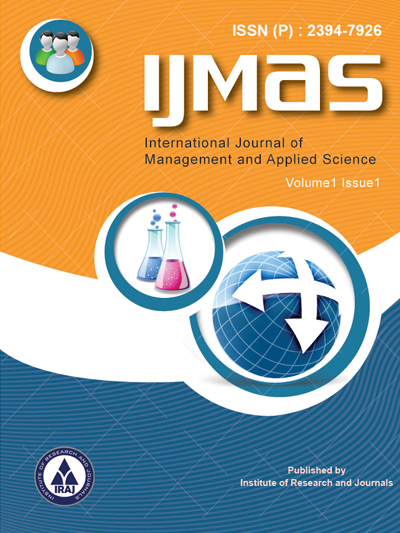Publish In |
International Journal of Management and Applied Science (IJMAS)-IJMAS |
 Journal Home Volume Issue |
||||||||
Issue |
Volume-5,Issue-9 ( Sep, 2019 ) | |||||||||
Paper Title |
Crude Oil Price Behavior: Random Walk, Mean Reversion, and Is there a Presage of Thailand Inflation? | |||||||||
Author Name |
Sitthidej Bamrungsap, Pachara Suksumek, Raweemas Wattanasak, Sirinuch Inlakorn, Sitapa Buakase, Sitthikarn Benjasupattananun, Thitima Chaiyakul | |||||||||
Affilition |
Faculty of Management Sciences, Kasetsart University, Thailand | |||||||||
Pages |
96-100 | |||||||||
Abstract |
This paper examines the behavior of crude oil prices, determining whether a random walk or a mean-reverting process is exhibited, and investigates the relationship between crude oil prices and Thailand inflation. Monthly Brent crude oil prices are collected from June 1987 to April 2019, covering 383 observations, while 124 observations of monthly consumer price index, unemployment rates, and policy interest rates of Thailand are gathered from December 2008 to March 2019. To determine the crude oil price behavior in 5 different time spans, both Augmented Dicky-Fuller (ADF) test and Phillips-Perron (PP) test are employed. Additionally, the GARCH (1,1) is also used to model crude oil prices in a heteroskedastic sense. The results indicate that crude oil prices follow a random walk process from Feb 1994 to Apr 2019, but from June 1987 to Jan 1994, a mean reversion is pronounced. The finding from GARCH approach reveals that crude oil prices are mean-reverting for the whole period, but this process becomes smaller after 1994. To foresee the inflation, an extended short-run Phillips curve is estimated. The derived coefficients suggest that oil price changes have only a small effect on changes in consumer prices. On the other hand, the inflation rates much respond to changes in policy interest rates. As such, a monetary policy is more likely to be a presage of inflation in Thailand rather than oil prices. Keywords - Random Walk, Mean Reversion, Unit Root, GARCH, Inflation, Oil Price, Policy Rate, Phillips Curve | |||||||||
| View Paper | ||||||||||